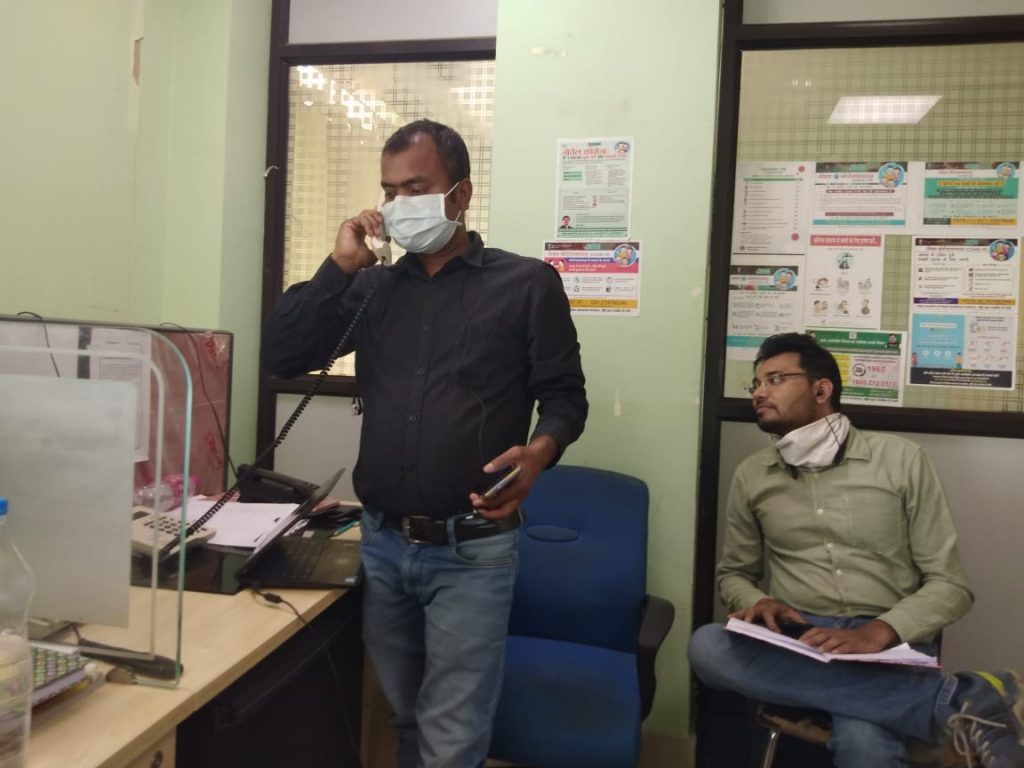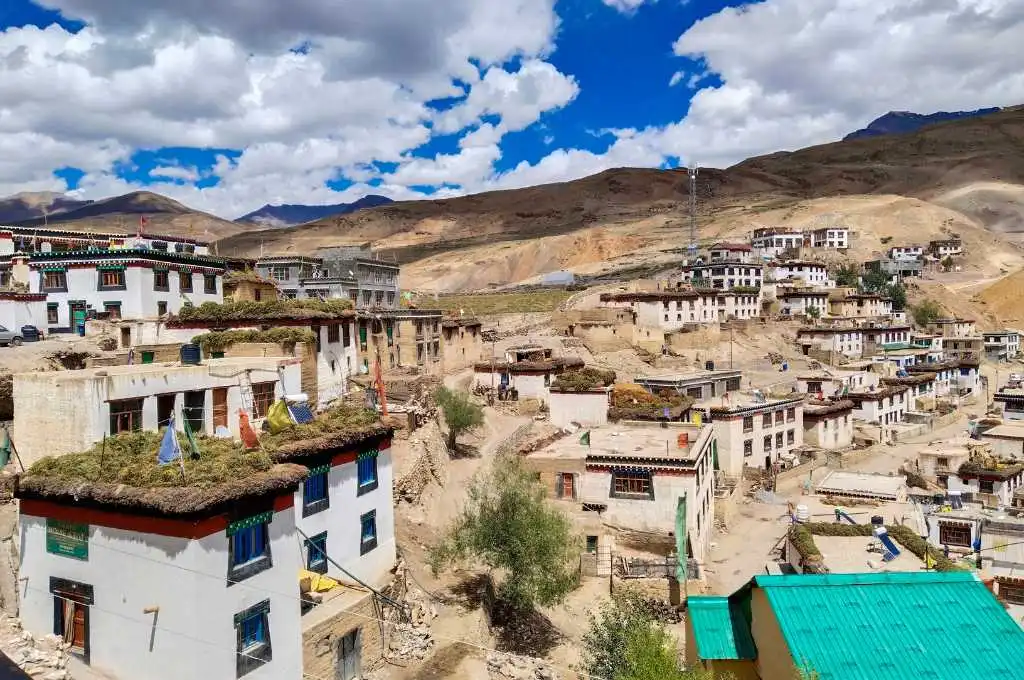My name is Vijay Viru and I am a member of PRADAN’s field team in Khunti, Jharkhand.
Prior to COVID-19, I was responsible for training the women of the mahila mandals, providing them with technical support on agriculture, and working with farmers during rabi harvesting on yield assessments, harvesting techniques, and so on.

When the COVID-19 pandemic hit Jharkhand and we moved into lockdown mode, my colleague Abhishek and I were assigned to the District Control Room (DCR) in Khunti.
The DCR is a coordinating unit that sits within the government administration, and fields calls from community members across the different villages and blocks that make up the district. We then relay these messages to the relevant government officials; in most cases these are the district officials or Block Development Officers (BDOs). The objective is to ensure that the government understands the problems on the ground and resolves them as soon as possible.
Since the lockdown, we have been working 24×7. There has been no respite. Sometimes, our work starts at 6 AM and goes on until midnight; at other times it goes on from 10 PM until the early hours of the morning.
Initially, most of the calls were around food supplies. “We haven’t got our rations, we don’t have any food left.” Some are around the law and order situation, some for passes to move around the block and district. We’ve also had migrant workers calling from outside the state, asking for help.
It’s the government functionaries in the field who have it bad. Whether it’s the block-level officials or the police, they are on their feet all the time.
We call the relevant BDO or other government officials, and coordinate with them regarding the relief that needs to be provided. In most cases, staff is physically present at the government offices—they maintain the 33 percent attendance rule and wear masks while they work. It’s the government functionaries in the field who have it bad. Whether it’s the block-level officials or the police, they are on their feet all the time. No provisions have been made for their meals, and they don’t have access to water as almost all shops are shut. Moreover, many haven’t been provided with masks or other protective gear. Despite this, they continue to do their work every single day. Given the criticality of the jobs they do, we’ve been using some of PRADAN’s funds to provide them with gloves and masks.

The DCR is a coordinating unit that sits within the government administration, and fields calls from community members across the different villages and blocks that make up the district. | Picture courtesy: Vijay Viru
9.30 AM: I speak to a district-level official in the DCR. He asks me for the updated ration lists at a panchayat-level; the government wants to make sure that all the people are being attended to. Since we’ve been in these communities for years now, its relatively easy for us to get the lists. We get the lists either through our own network or through the Panchayati Raj Institutions (PRIs).
10 AM: I call up one of our village volunteers to get their updated list. The village volunteers are women from our self-help groups (SHGs) and village organisations. She tells me about the new suspected COVID-19 cases in her village, the pregnant women who have to be given their THR (take-home-ration), households that have run out of rations after 40 days of being in lockdown with no source of income, and the number of vulnerable families that need more rations. We update this list and then send it to the government officials. When they can, they provide relief; when they can’t, we step in and provide the necessary rations, food supplies, masks, and so on.
3.30 PM: I get a call from one of the farmers who complains about the restricted hours of sale. Farmers are only allowed to travel to the markets and sell their produce between 7 and 11 AM. It is hard to sell their stock in such a short time, and this puts more pressure on prices. Depending on how many farmers (and how many customers) turn up at the market, the same vegetable can sell for anything between INR 10 and INR 40 per kg on any given day.
There is also added pressure when it comes to transporting produce. With fewer vehicles allowed on the roads, the cost of hiring them is higher.
It is watermelon season in Jharkhand. Over the past few years, there has been very high demand for the fruit, due to the harsh summers, and the month of Ramzan. However, with many mandis shut and no interstate travel permitted, the supply is far in excess of the demand. Normal sales of 40-50 tonnes have now been reduced to a mere 15-20 tonnes. Adding to the problem is the fact that it’s been raining here in Khunti; the weather has cooled down, further reducing the demand for watermelon.
5 PM: I join a video conference call with the NREGA commissioner, the district development commissioner, and other officers. We have a discussion about three schemes that have been launched by the Chief Minister to generate wage employment for workers in rural areas—the Birsa Harit Gram Yojana (BHGY), Neelambar Pitambar Jal Sammridhi Yojana (NPJSY), and Veer Sahid Poto Ho Khel Vikas Scheme (VSPHKVS). The conversations are about how to ensure that more and more people are included under NREGA, how to get job cards made for those that don’t have them, and how to ensure that they get work quickly.
Everyone on the call—which goes on for three hours—understands that even if we can ensure that people have NREGA work till the kharif season—which is 40 days away—they will be able to earn INR 4,000-5,000, which will see them through the next several weeks, and more importantly, allow them to buy seeds, fertilisers, and other inputs in time for kharif.
The need to purchase seeds is a stark reminder of the fact that most of our farmers have transitioned to hybrid seeds for rice, which means that these necessarily have to be bought from the market. Earlier when they used local seeds, they would always keep a portion for the next harvest—they didn’t need money to buy them. Today, very few farmers still have local seeds. For most farmers, with no seeds and no savings due to the extended lockdown, the cost of inputs is a substantial burden this year.
In addition to seeds, we’ve been getting demands for other agricultural inputs, such as fertilisers, pesticides, and equipment. These have been purchased in Ranchi, but need to be transported to the blocks and districts.
8.30 PM: I call a government officer in the agriculture department, to get vehicle permits to transport these agricultural inputs. Earlier, we had been given district-level permission, but we also need to travel from one district to another, and hence need state-level permission too. He agrees to give passes both for state-wide transport, as well as, for larger vehicles so that we can carry more material. However, he is unable to do much about the problem of marketing that our farmers are facing, since interstate travel is prohibited and a lot of the produce is sold outside Jharkhand.
As told to IDR.
—
Know more
- Learn from this COVID-19 response plan that includes guidelines from experts and practitioners to help civil society organsations amplify efforts and provide support to vulnerable communities during the pandemic.
- Read this article on options that small, marginal farmers of rainfed regions have to deal with the COVID-19 crisis.




